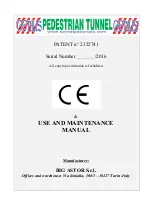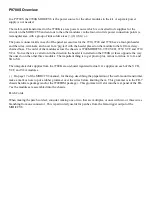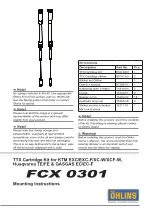
3-16
IM 2560A-01EN
Wiring Low Voltage-Current Output Terminals
Wiring a Voltmeter or Ammeter
The fastening screws of the low voltage-current output terminals (OUTPUT 1) are M6. Either wind the
conductive part of the lead wire around the output terminal screw or pinch the screw section with the
crimping terminal, and then tighten the terminal knob firmly with your hand. The terminal or knob may
break if you apply excessive torque.
Wiring Example
HI
LO(±)
Voltmeter or ammeter
2560A
Low voltage-current
output terminals
Wiring Resistance Output
The resistance output can be wired into a three-wire system or four-wire system. For wiring examples
and precautions, see appendix 4.
Note
• Current sinking (absorption) is possible in any of the voltage or current ranges. For example, by absorbing
the current from a voltage source such as a distributor, the 2560A can simulate a load, like a two-wire
transmitter. For the maximum sink current, see “DC Voltage Sourcing” or “DC Current Sourcing” in section
2.2. Immediately after sinking current that exceeds 30 mA, errors exceeding the accuracy specifications
may occur due to the increased temperature inside the 2560A.
In the following example, the value is set to 20 mA and the polarity to negative.
HI
LO
Voltage source
(e.g., distributor)
4-20 mA
+
−
• When using a small output range, such as 100 mV, wind the copper wires directly to the output terminals.
If the output terminal temperature changes as a result of making contact with the lead wires, crimping
terminals, banana plugs, or other conductors during wiring or due to ambient air movement, errors
exceeding the accuracy specifications may occur when a small output range is used. In such situations,
wait until the output stabilizes.
3.6 Connecting Wires
















































